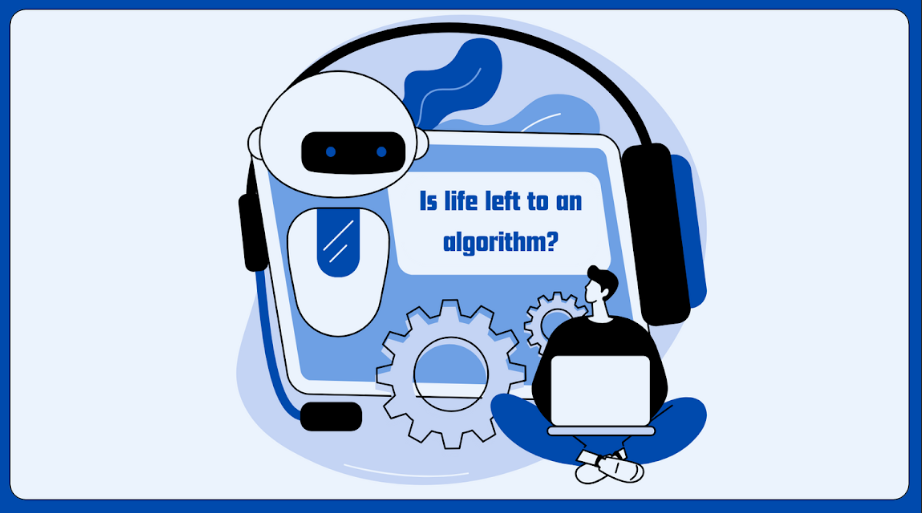In the modern world, technology has been the most important tool for improving people’s lives. Even though technology has undeniably reinvented how we all see the world, some are left to wonder if technological advancements have simply gone too far. As artificial intelligence develops further by the day, the notion of replacing human creativity, undeniably, comes into question.
To fully understand the potential threat AI poses for future generations of creatives, one must first understand how AI works the way it does. Generative Artificial Intelligence is the specific type of AI used to create visual artwork and responses in apps such as Chat GPT. Generative AI functions by analyzing a substantial amount of data, then it generates responses and new material through the patterns it recognizes in the original data. This generally boils down to the predictive text feature found commonly on any cell phone; the feature predicts what might be said next based on data from past text messages. Further, this has some familiarity with Chat GPT which also creates new text from past data.
So, what is the problem? Why are artists and writers alike so distraught over a computer creating artificial art and stories from some data? Hayao Miyazaki, mastermind and co-founder of Studio Ghibli, puts it best. In the 2016 documentary, “Never-Ending Man: Hayao Miyazaki,” Miyazaki is shown a zombie animation made entirely from the previously new technology in AI.
“I strongly feel that this is an insult to life itself,” Miyazaki lamented within the documentary.
Though not every artist would go to the extremes of describing AI as such, the sentiment is still shared similarly among most creatives today. For example, Charlotte Reisse, whose artwork was selected in the Top 5 Most Inspiring Works of Art in the 2024 North Penn High School Inspire – 50 Works in 50 Days Virtual Art Show — sees a downside in the technology.
“People who are using AI art are kind of, you know, blind to the repercussions that it has,” Reisse noted.
For many in the creative field, if protections were not put in place, the constantly innovating qualities of AI could pose a real danger to the security of the future jobs and livelihoods of the people working in such a profession. Topics such as these were exactly what was fought for in the writers’ and actors’ strikes this past summer and fall.
“AI can’t write or rewrite literary material,” according to the deal reached following the strikes, as presented on the Writers Guild of America East website. “AI-generated material can’t be used to undermine a writer’s credit or separate rights.”
Even with the protections brought upon by the deal, the future of artificial intelligence remains uncertain, with undefined possibilities and unsaid limitations.
However, one limitation remains clear, the lack of humanity, and worse the lack of creativity.
“One of the biggest parts about art is the fan base and following not just the story itself, but also, you know, all of the quirks behind it. There’s not going to be any quirks worth sticking to. There’s going to be no human trace to really hang onto to really empathize with the story,” Reisse explained. “I feel like you can’t create something empathetic through the creation of AI art.”
The arts are more than just a form of entertainment. It is a message, it is a means for change, it is a life-altering story, it is an escape, it is home. Creativity simply can’t be set to an algorithm, stripped of humanity, and produced the same “art.” Art has always been a means for making human life better, more manageable, and more meaningful, by humans for humans.
“Artists already don’t get paid enough. I don’t think it’s kind or respectful to call AI art, ‘art,’” Reisse mentioned. “It’s so much more than just the art itself, and the visuals of it itself, and more the people behind it. I think once you separate the art from the artist in that sense, I think it loses all meaning it possibly could.”
Artificial intelligence will always be beat by human creativity, in every imaginable way. Nevertheless, despite this, it doesn’t mean generative AI is completely useless when it comes to creatives. AI could potentially be a helpful tool, or starting point in collaboration with human creativity, with well-due moderation. For example, things like story prompts and reference images could be great things for creatives to use as starting points to practice. That is to say, when it comes to published work, originality takes priority.
“It’s like tracing, almost,” Reisse suggested. “Like, you can use tracing almost as practice to kind of get used to it, but I don’t think it should ever make its way into published art.”



Willa Magland • Feb 28, 2024 at 9:45 am
This is a great article, and sums up my feelings exactly. Sure, AI generated content may look pleasing, or sound fluent and digestible, but looking the slightest bit closer it becomes easy to see how truly hollow and meaningless it all is (try zooming into any AI generated photo, or analyzing a piece of AI writing). There’s a reason we study the arts from hundreds of years ago, because they have *substance* within them. They’re the result of pain and love and passion. Even the suggestion that this can be replaced by a synthetic is disgusting and embarrassing.
A blogger I follow put it the best: “I’m not spending my time reading something you didn’t think was worth your time to write.”